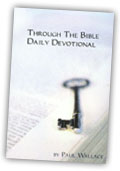3/9 Leviticus 2:1
1 "When anyone brings a grain offering as an offering to the LORD, his offering shall be of fine flour. He shall pour oil on it and put frankincense on it
We have seen that God instructed man to use animal sacrifice because of the need to see the seriousness of sin and its consequences. God gave Moses specific instructions for daily animal sacrifice in the Tabernacle. Moses was also given instruction for grain offerings. If we see the seriousness of sin in the shedding of blood, what can a grain offering show us?
In that age, covenants between tribes were concluded with a meal that included salted bread. Salt was a preserving agent and pictured the enduring quality of the covenant. The fact that it was consumed at a meal together pictured fellowship. The grain offering in the Tabernacle included salt (Leviticus 2:13), oil, and frankincense. The oil would help it to burn, but was also a picture of the Holy Spirit who is involved in all our worship. The frankincense gave it a fragrant odor and was symbolic of prayer.
The essence of the grain offering then is that the worshiper, as an Israelite, remembered their eternal covenant with God. But let us go deeper to the ultimate meaning. The grain had to be bruised and crushed to turn it into fine flour. Jesus called Himself the bread of life. He was bruised and crushed for us, full of the Holy Spirit, and intercedes for us in prayer. He is the ultimate grain offering who brings us into eternal fellowship with God.
He is received by the Father, but also ours to partake. The priest of the Tabernacle ate all of the offering that was not consumed, and so we as priests of the New Covenant partake of Jesus, the bread of life. Each time we receive communion we should remember the grain offering and its fulfillment in Jesus.
Remember: Jesus is forever your bread of life, filled with the Holy Spirit, lifting up prayer on your behalf.








